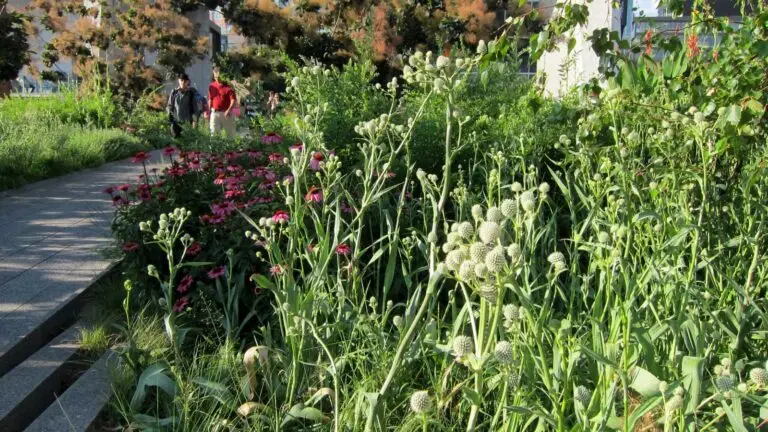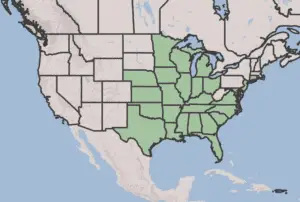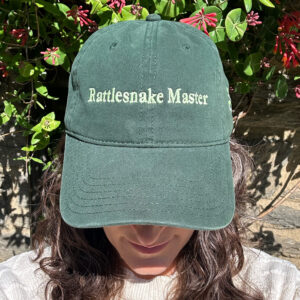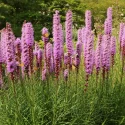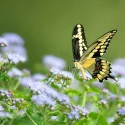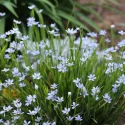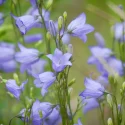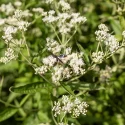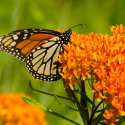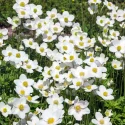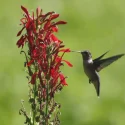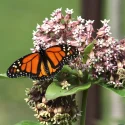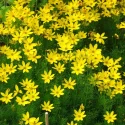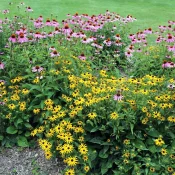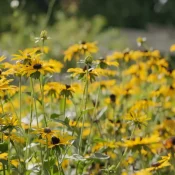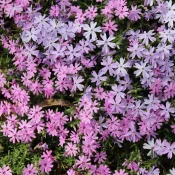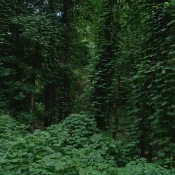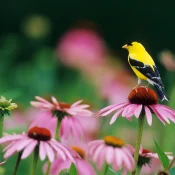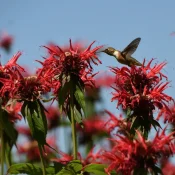Rattlesnake Master
YES, that name is correct. You definitely need Rattlesnake Masters in your sunny garden.
Rattlesnake Master is an amazing native plant with a badass common name. The plant looks like it belongs in the desert, with tall spikey white flower balls at the top of rigid stalks. After it blooms, its round seed pods look like modernist sculptures throughout the fall and winter. It’s a show-stopper in sunny Mid-Atlantic, Midwest, and Southern gardens. It’s very drought tolerant but difficult to move once planted. Make sure to add a nametag in your garden when you plant. Scroll on for planting tips.
- Full Sun
- Medium (3-5')
- Summer flowers, Late summer flowers
- Multi-season flowers
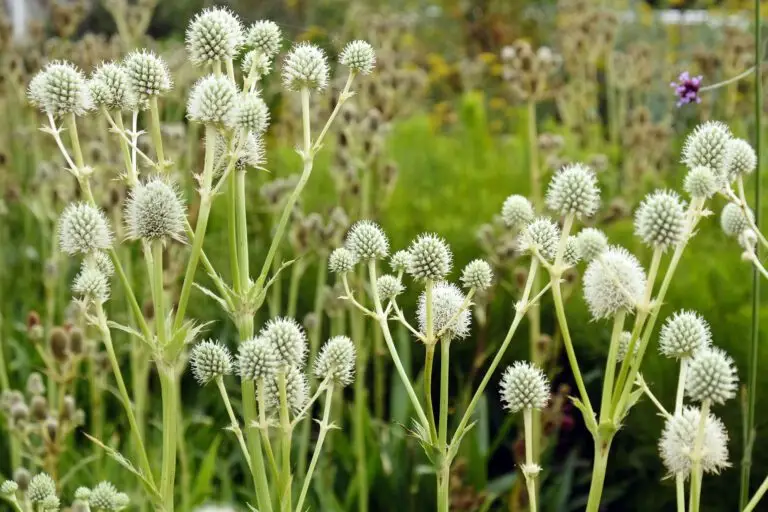
This article is about planting, finding, and caring for Rattlesnake Master. We’ll share some ideas on where to find seeds and plants and recommendations on pairings and where to plant.
But we can’t discuss planting tips before addressing the “snake in the room.”
Where did the name Rattlesnake Master come from?
Native Americans used this plant for many uses—sandals, baskets, and even perhaps snakebites. According to the US Forest Service:
“The Mesquakies used it in their ceremonial rattlesnake dance and used the roots to treat rattlesnake bites. The bristly flower heads are arranged like a pitchfork, suggesting a possible use as a snake stick to pin down the head of a rattlesnake. There is no evidence for the efficacy of this plant in prevention or treatment of any medical condition. Native Americans would use the fibrous leaves of this perennial plant for weaving purposes, like making sandals and baskets.”
To say it plainly: although its name says otherwise, Rattlesnake Master does not help or prevent snakebite or any other medical condition. There are actually quite a few native plants that have common names given for their perceived medical value. Other plants named for their alleged healing powers include Culver’s Root, Boneset, and Joe Pye Weed.
More about the name (it’s a…carrot?)
Rattlesnake Master’s Latin name (Eryngium yuccifolium) includes “yucca” inspired by its cactus-like appearance. But it’s not part of the yucca family—it’s actually related to carrots.
Rubbing a leaf between your fingers will release its carroty smell. Its long root (called a taproot) looks very carrot-like.
Taproot = drought-resilient powers
This carrot-esque taproot is the reason why Rattlesnake Masters are drought-resistant experts. They store water and sugar in this taproot, allowing the plant to thrive even during dry spells. In fact, every plant with a taproot is great in droughts. Butterfly Weed (a type of milkweed) also has a taproot and is similarly resilient.
Rattlesnake Master has a great story and it looks incredible year-round. If you live in the Mid-Atlantic or Midwest (or even the lower parts of the Northeast), plant some in your sunny garden ASAP. Read on to find out how to plant Rattlesnake Masters.
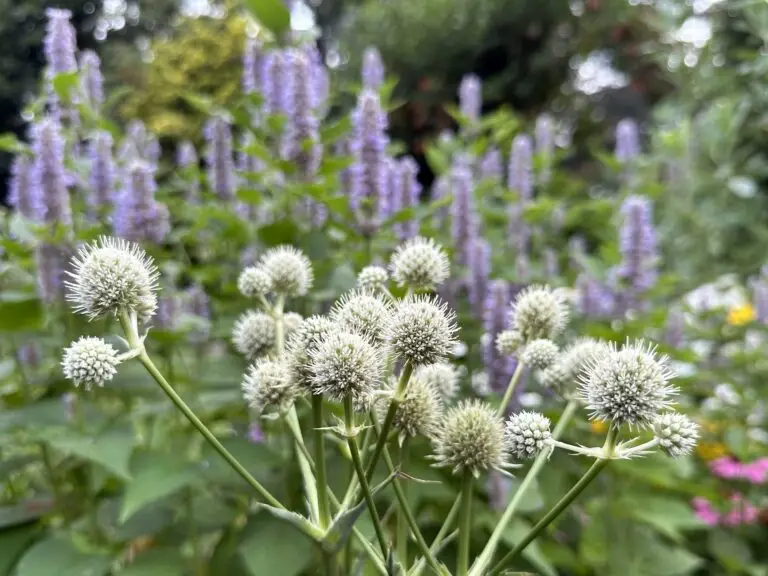
What are benefits of planting Rattlesnake Master?
Rattlesnake Masters are very easy to grow and exceptionally easy to keep alive over the years. They are:
- Drought resistant: don’t worry about them surviving dry summers; they are made to survive low-rain seasons, thanks to that carrot-like taproot
- Low maintenance: no fertilizer or special needs are required for Rattlesnake Masters to thrive
- Longtime bloomers: their sphere flowers are often open from May to September!
- Perennials: they will come back year after year. Once you plant them and they are happily established, you can enjoy them in your yard for years to come.
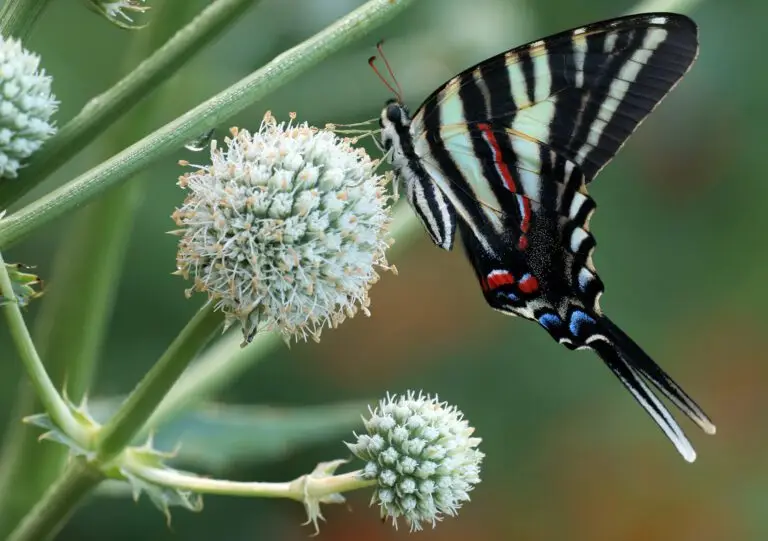
Where to plant Rattlesnake Master
Once you’ve found a sunny spot, it’s time to plant these incredible native plants. Pair them with other tall flowers that also like full sun, like Blazing Star, Black-eyed Susan, and Coneflowers. All these plants get tall! It’s gorgeous to use them almost like a living flower fence (like The Highline does, below). Otherwise, you can put them behind shorter flowers like native Bee Balms to make a multi-level garden.
What is Rattlesnake Master’s native range?
Rattlesnake Master’s native range includes almost half of the United States, from Connecticut south to Florida, and west to Texas (map from the USDA).
No wet areas for Rattlesnake Master
Rattlesnake masters like to be planted in sunny and well-drained soil. They do not like wet soil or standing water. (The benefit of liking drier areas is what makes them drought-tolerant.) Once established, rainwater will keep them happy for years.
A note about transplanting them once they’re in your garden
As mentioned before, Rattlesnake masters have a taproot. A taproot looks like a carrot: it’s a long, thick root that shoots directly down from the plant’s stem. (Remember earlier when we said they were in the carrot family?) Taproots are great for storing water and helping a plant be drought-tolerant. But taproots make transplanting plants difficult. Once you pick a spot to plant them, it will be challenging to move them.
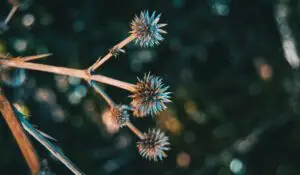
Rattlesnake Masters in the winter
Leave your Rattlesnake Master plants in the garden throughout the fall and winter and let them become nature’s bird feeders. Leaving our gardens alone throughout the fall and winter gives food for songbirds. The beautiful natural shapes of the dried rattlesnake master plants turn your garden into a sculpture garden during cold months.
Rattlesnake Master is deer-proof
Deer do NOT eat Rattlesnake Master. If you’re worried about deer nibbling your garden, planting Rattlesnake Master is a good native gardening choice.
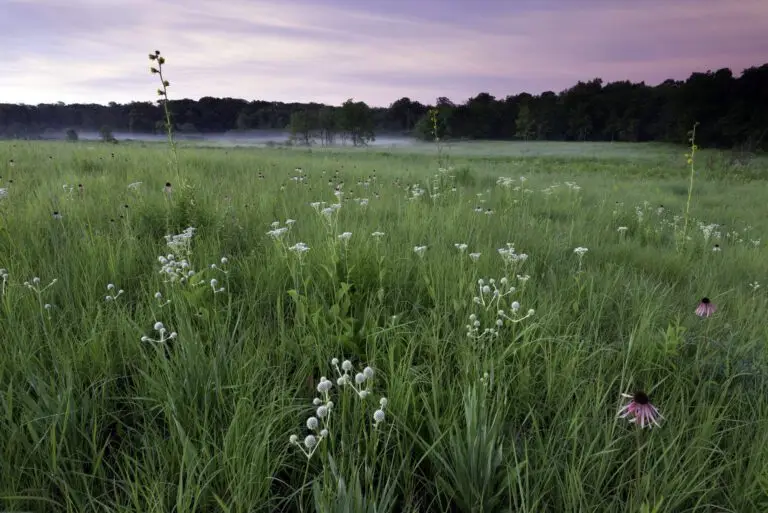
Grow Rattlesnake Master by seed
It’s easy to plant Rattlesnake Master by seed if you are patient: plants started from seed may not flower until the second or third year. Grab a seed head at the end of the fall season to get seeds, or buy a seed packet online.
Fall planting
To plant in the late fall, scatter seeds and loosely throw mulch or dirt over the seeds. Seedlings will emerge in the spring. (Yes, it really is that easy! Remember, native plants have thrived for thousands of years without us and our trowels.)
After the seedlings emerge, water them daily for the first month to ensure they get enough moisture to grow. Rattlesnake Masters will be green the first year and then bloom in future summers.
Spring planting
Direct sow in early spring when the soil is warm, 65°F (18°C). Take the seeds individually and plant them into holes 1/8″ deep. Water daily for the first two months to ensure they get enough moisture to grow. Watch the seedlings emerge in the spring, grow greenery that summer, and bloom in future summers.
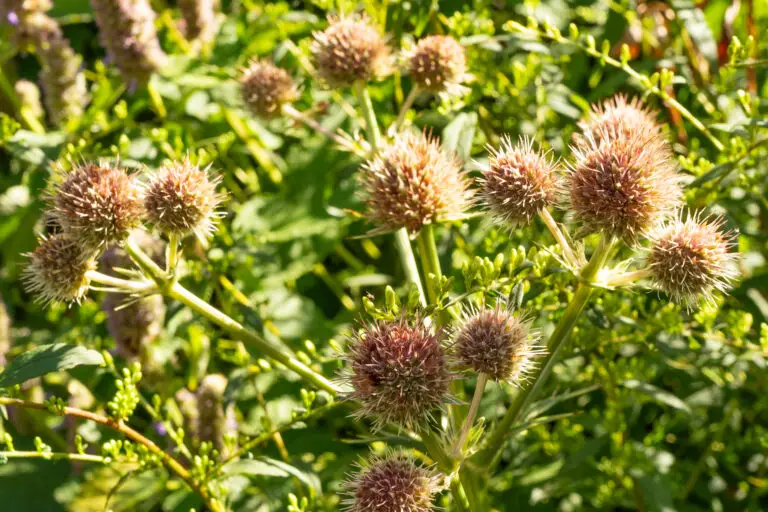
Buy Rattlesnake Master seeds online
There are lots of places to buy seeds online for Rattlesnake Masters. A tip as you peruse different sellers:
Local blooms, fewer glooms
Find native plants near you
Local plants and seeds—grown within 800 miles—are best suited for your garden. This also fosters cross-pollination among locally grown plants, enhancing their resilience for generations to come. Stay local for a happy garden!
Here are some places to buy native Rattlesnake Master seeds online:
- Select Seeds (Union, Connecticut)
- Ohio Prairie Native Seeds (Hiram, Ohio)
- Prairie Moon Nursery (Westfield, Wisconsin)
- Roundstone Native Seed (Upton, Kentucky)
- Everwilde Farm (Fallbrook, California)
Grow Rattlesnake Masters from plants
Rattlesnake Master plants will normally flower the first year they are planted and will return in the following years with stronger plants and bigger blooms. (This is because the plant nursery has done the hard work of getting them started and growing for the first year.)
There are a few reliable ways to find Rattlesnake Master plants for your yard:
Where can I find seeds and plants?
Finding native plants can be challenging (we partly blame Marie Antoinette.) To make it easier, we’ve assembled four sourcing ideas.
Native Nursery List
300+ native nurseries makes finding one a breeze
Online Native Plant Sellers
We've included 100+ online resources to help
Society Plant Sales
Every state has a native plant society; find yours
Online Communities
Local Facebook groups are a great plant source
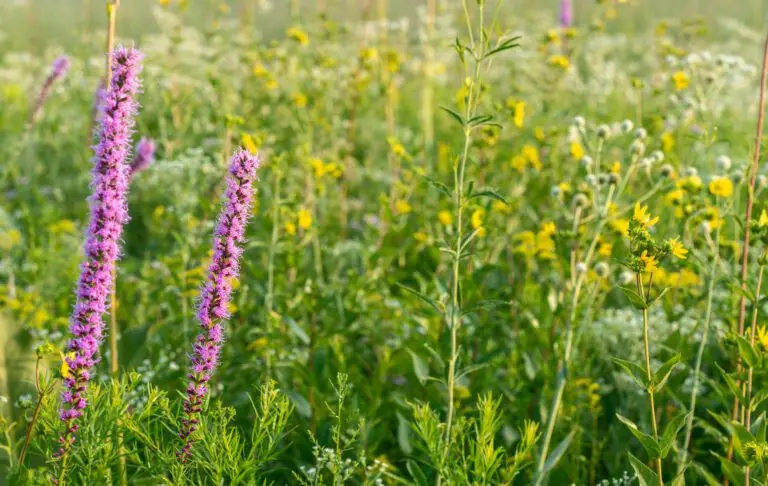
What to plant with Rattlesnake Masters
A good rule of thumb when picking garden pairings is to choose plants that bloom throughout the growing season, so you and the pollinators always have flowers.
Native flowers for spring
Other native plants for the summer
Native plants for the fall
If you love Rattlesnake Masters, you’ll love our new merch!
Make a statement with our Rattlesnake Master hat—bold, badass, and built for those who know their native plants.
Wear it with pride, spark curiosity, and rep your native plant knowledge like a pro.
Let’s all plant Rattlesnake Masters
In conclusion: plant a few badass Rattlesnake Masters in your sunny garden for year-round interest. Make sure you add a sign to your garden, so those who pass by are inspired by the name and the looks of this special native plant. To get more ideas on native plant gardening, explore our native plant library.
Sources
- Harris, Marjorie. Botanica North America: The Illustrated Guide to Our Native Plants, Their Botany, History, and the Way They Have Shaped Our World. (2003), 314-315.
- Johnson, Lorraine. 100 Easy-to-Grow Native Plants for American Gardens in Temperate Zones. (1999), 91.
- USDA: Rattlesnake Master, ‘Plant of the week‘
- Xerces Society Blog, Rattlesnake Master
